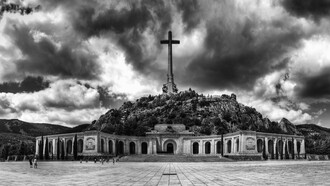Donald Trump’s return to power has taken an unconventional turn, with his latest moves suggesting he’s on a mission to craft a narrative that positions him as the “cool president”. From high-profile pardons of controversial figures like the creator of Silk Road, Ross Ulbricht, to overturning the TikTok ban, Trump is making a bold play at capturing the hearts of the younger generation. With a little help from his Gen Z son, Barron, who’s grown up in the world of memes and TikTok trends, the former president is presenting himself as someone who understands what the youth wants, or at least what they’re scrolling for.
But how genuine is this reinvention? Are these decisions a reflection of Trumps personal evolution? Or is it all part of a calculated strategy to win over the notoriously woke and sceptical Gen Z audience? The million-dollar question remains: is Gen Z buying it, or is this a generation too savvy to fall for Trumps “down with the kids” act?
The Great Pardon Parade: justice or chaos?
With only one pardon in his first year of presidency back in 2017, Donald Trump has now issued around 1,500 pardons during his second term. Up there with one of the most controversial pardons is the case of Ross Ulbricht, the founder of Silk Road, an infamous dark web marketplace which was shut down by the FBI in October 2013. Serving a double life sentence for his involvement in creating the platform, Ulbricht was pardoned under Trumps claim that “everyone deserves a second chance.”
By warranting Ulbricht’s actions through a pardon, Trump has unintentionally shed light on the complex, double - edged nature of this digital space. Forcing society, (Gen Z particularly) to confront the good, the bad and the ugly of the dark web.
The truth about the dark web
Notorious for its connection to illegal activities, the dark web is known for its exploitation of some of the most vulnerable individuals in society. One of the most concerning issues is human trafficking, with anonymous platforms enabling traffickers to sell humans as commodities with practically no traceability. The dark web has also become a haven for weapons deals, illegal drug market, child exploitation and even murder services.
For many, this presents the dark web as a lawless space that poses a huge threat to the morality of society. Trumps pardon of Ulbricht raises the question: by excusing the actions of someone who enabled such a platform, is he endorsing these dark elements? Or is he highlighting an opposing narrative, one where the dark web serves as a tool for good in some circumstances?
While there are undeniable dangers of the dark web, it can also serve as a vital lifeline for people in extreme circumstances.
For instance, in countries where governments suppress civilians, the dark web can offer a safe space for freedom of speech. Encrypted platforms have long allowed journalists and activists the means to communicate and share information without fear of retaliation from the oppressor. SecureDrop is an example of a platform only accessible through the dark web which allows whistleblowers to safely leak valuable information to media outlets.
In places where government censorship is rampant, like North Korea and Iran, the dark web offers access to uncensored news from all over the world and banned social media platforms. This access not only empowers individuals to stay informed but allows them to bypass the oppressive digital firewalls. The dark web can also help to share necessary educational materials and medical resources in regions where education and healthcare are inaccessible to certain civilians. Though ethically questioned, black market pharmaceutical sales can provide life saving mediations to people who are unable to afford or access them through traditional means.
Trump’s role in the dark web debate
For Gen Z, the dark web represents a world that promises both digital freedom and perils of unchecked anonymity. Raised on stories of cybercrime but also valuing decentralisation and privacy, this generation is positioned uniquely to grapple with its vast complexities. Trumps actions thrust these debates into the spotlight, challenging young people to consider whether the dark webs benefits outweigh its risks.
By pardoning figures like Ulbricht, Trump has tapped into a larger conversation about the digital future, one that resonates with Gen Z. Whether his moves are seen as visionary or reckless will depend on how this generation chooses to engage with the evolving landscape of the dark web.
Trump's cryptocurrency: a digital power play
In another bold move, Trump has launched his own cryptocurrency, Trump Coin, positioning himself as a champion of financial innovation. For Gen Z, a generation invested in crypto and the decentralisation of finance, this move signals a president with an understanding of modern economics, or at least, he hopes to appear that way.
Supporters of Trump Coin see it as a way to democratise wealth, empowering the younger generation to participate in a system that has traditionally excluded them. Through embracing blockchain technology, Trump is framing himself as a forward-thinking leader, an apparent contrast to Biden, who many critics say seemed out of touch with the ever-evolving digital landscape. Although not everyone is convinced. The ethics of a sitting president creating a financial instrument that could directly benefit him, and his allies is in question. Some dispute that Trumps crypto ventures are more about exploiting a volatile market than innovation, in the hopes of consolidating wealth and power.
The TikTok savior complex
Another surprising act from Trump came just one day after Biden left office, when he saved TikTok from its proposed ban. While the apps future had been questioned by Biden’s administration due to national security concerns, Trump rapidly swooped in and intervened, positioning himself as the hero of Gen Z’s favourite social platform. The timing was convenient, casting Biden as outdated and Trump as the modern president who “just gets it.”
Gen Z took to TikTok immediately, flooding the platform with reaction videos, memes and hashtags like #TikTokSavedByTrump. For many young people, this move symbolised a president willing to fight for their digital freedom.
Critics argue that Trumps “saviour complex” is nothing more than a strategic PR move to win over a demographic that was largely critical of him during his first term. By aligning himself with TikTok, Trump is able to tap into a generations sense of ownership over the platform, depicting himself as the only one who can protect it from censorship and bans in the future.
Winning over the digital generation?
Trumps approach to digital freedom and the dark web could be more strategic than it seems. By pardoning the likes of Ross Ulbricht and supporting cryptocurrency, Trump might be positioning himself as a master of digital autonomy. Known for the disdain towards censorship and the love of liberal learnings, Gen Z often gravitates toward the promotion of freedom and alternative ways of thinking. For many, traditional systems of authority feel restrictive and incapable of adapting to the fast-paced digital age.
By aligning himself with issues that champion decentralisation and online freedom, Trump appeals to younger voters who are frustrated with algorithmic control and censorship. Whether its legitimising spaces like the dark web or lifting the ban of TikTok, Trump appears to be sending a message to the masses: he’s not afraid to break the mould for the sake of innovation in the slightest.
This calculated move may win over a portion of Gen Z that values independence over conventional politics. However, it also sparks questions about whether his actions are authentic or a ploy to secure favour with a generation significant to shaping the future of America. Is Trump truly embracing progressive ideals, or is this a strategic manoeuvre to maintain power for years to come? Either way, his appeal to Gen Z forces a reckoning with the complexities between freedom, leadership and technology in the modern age.
So, has Trump done enough to cement himself as the “cool president” for Gen Z, or is he simply a master of smoke and mirrors, rigging the system to stay in the spotlight? Only time will tell.















